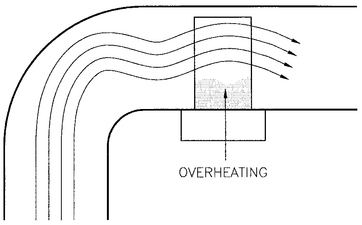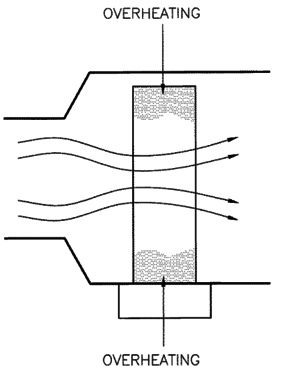Pressure Plates and Duct Heaters
Most duct heater applications allow for a flexible heater installation. But in some situations, the install location is in a less than ideal location, such as by a 90 degree elbow or right next to a sudden duct transition. Think its ok to use our standard duct heater? NO. To prevent premature heater failure due to hotspots you’ll need to consider a pressure plate to evenly distribute that airflow. Indeeco’s pressure plate option is one of those back pocket options that allow you to be a bit more flexible.
WHAT ARE THEY
Indeeco pressure plates, when required, are made of perforated aluminum sheets and are factory installed on the inlet of the heater. We utilize a 40% open pressure plate. Pressure plates restrict the flow of air and normalizes it across the duct resulting in uniform airflow. A secondary benefit is that it stops stratified heating or uneven heating of an air stream.
The one downside to using a pressure plate is that it creates additional pressure drop in the duct. The pressure drop is relatively low unless you are dealing with a high volume application. The chart shown below, illustrates the pressure drop relative to air velocity and compares open coil vs finned tubular (Reference the pressure drop curves below from Indeeco duct heater catalog C10-20, page 3). As you can see, the greater the air velocity the greater the pressure drop will be. If working with an air velocity of say 500 fpm, the pressure drop will be low and in most cases lower than a filter pack or similar item.

WHERE ARE THEY USED
Typically, pressure plates are utilized when duct heaters are to be installed within 4 ft of a 90 degree elbow or an abrupt duct transition.

As you can see in the image above, a 90 degree elbow will cause the air stream to follow the outer edge. Heaters located within 4 ft. of the elbow will be subject to an uneven airflow which will cause a hotspot and premature heater failure towards the control side of the heater.
Looking at the image below, an abrupt duct transition has a similar effect on the airflow pattern. Here we see a transition from a smaller duct to a larger. As you can see the airflow is more concentrated in the center of the duct and as before if a heater is placed within 4 ft. of the transition the heater will experience uneven airflow and hotspots on the outer edges and will cause premature failure.

In both cases seen above, the use of a pressure plate will normalize the airflow providing even heating coverage across the heater minimizing any potential of hotspots from uneven airflow.
For additional information or resources please contact your local sales representative or an inside Indeeco Sales engineer.